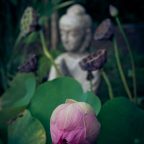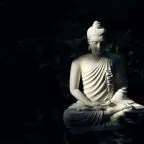Winter Solstice – Yule
The Longest Night of the Year
Imagine a wheel… The symbolic wheel of time… When this wheel completes a full circle, there is a tiny little pause before it begins again! This is what happens with the Sun’s circle around the Earth. When a round is complete, we experience the longest night and the shortest day of the year in the Northern Hemisphere. This is the Winter Solstice or Yule, from the Norwegian word for wheel and this year will be on the 21st of December.
The time between Samhain and Yule is the dark time of year when we slow down and enter dream time. All of nature withdraws and waits for the energy to shift again. Now, the active outward energy returns with the Sun’s birthday. From now on the days will lengthen and the warmth will come again. To understand this moment we need to realize that this point is not the beginning in a linear way, but a rebirth within a circle. Something old must die in order for something new to be reborn. The Solstice is a moment to stop, to look backward in inner reflection, and to look forwards to a new active season that starts with the newborn Sun’s power.
Winter Solstice Celebrations Around the World
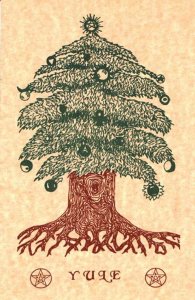 The Christian Church adopted this time to celebrate the birth of the “Son of God” Jesus, the newborn King on the 25th of December, just a few days after the Winter Solstice. The Mithraic religion had a similar savior, Mithra, who was also born at the Winter Solstice after his death and re-conception 9 months earlier. His was called too, the Light of the World. A similar story is the one of the Greek savior Hercules, also born from a virgin. His twelve labors symbolized the passage of the Sun during the year through the twelve signs of the zodiac. After his journey he was clothed in scarlet robes, killed, resurrected as his own divine father, to marry the virgin Mother Goddess and be reborn all over again at the Winter Solstice.
The Christian Church adopted this time to celebrate the birth of the “Son of God” Jesus, the newborn King on the 25th of December, just a few days after the Winter Solstice. The Mithraic religion had a similar savior, Mithra, who was also born at the Winter Solstice after his death and re-conception 9 months earlier. His was called too, the Light of the World. A similar story is the one of the Greek savior Hercules, also born from a virgin. His twelve labors symbolized the passage of the Sun during the year through the twelve signs of the zodiac. After his journey he was clothed in scarlet robes, killed, resurrected as his own divine father, to marry the virgin Mother Goddess and be reborn all over again at the Winter Solstice.
The Winter Solstice has been celebrated for centuries in all ancient civilizations around the world. Megalithic monuments acknowledged this return of the Sun. In some temples, the first rays of the newborn Sun were lighting a sacred object. In Iran, families often kept fires burning all night to assist the battle between the light and dark forces. In ancient Rome, where it was called Dies Natalis Invicti Solis, or the Birthday of the Unconquered Sun, masters even celebrated as equals with their slaves. Throughout history, celebrating the solstice has been a way to renew our connection with each other and with the divine through acts of goodwill, special rituals, and heightened awareness.
Bonfires were lit in the fields, children were escorted from house to house with gifts of clove spiked apples and oranges which were laid in baskets of evergreen boughs and wheat stalks dusted with flour. The apples and oranges represented the sun. The boughs were symbolic of immortality (evergreens were sacred to the Celts because they did not “die” thereby representing the eternal aspect of the Divine). The wheat stalks portrayed the harvest, and the flour was the accomplishment of triumph, light, and life. Holly and ivy not only decorated the outside but also the inside of homes, in hopes Nature Spirits would come and join the celebration. A sprig of Holly was kept near the door all year long as a constant invitation for good fortune to visit the residents. Mistletoe was also hung as decoration. It represented the seed of the Divine, and at Midwinter, the Druids would travel deep into the forest to harvest it.
Many customs created around Yule are identified with Christmas today. If you decorate your home with a Yule tree, holly, or candles, you are following some of these old traditions. The Yule log, (usually made from a piece of wood saved from the previous year) is burned in the fire to symbolize the Newborn Sun/Son.
Here are some ways to tune into the spirit of the Yule and enjoy this still point in the Circle of Life:
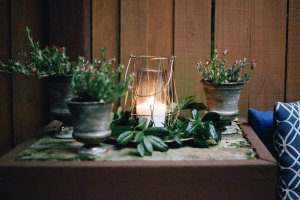
- Decorate your home with sacred plants connected with Winter Solstice: evergreen wreaths & boughs, mistletoe, holly, and ivy.
- Harvest a Yule tree in a sacred way from a tree farm that practices sustainable agriculture, if you can, or intuitively select a tree, cut or symbolic, from a shop in your area. Set up the Yule tree in your home and decorate it with lights, sun symbols, and other images. Reflect on blessings of joy, renewal, and well-wishes as you decorate the tree.
- Kindle lights to represent the Sun. Decorate with electric lights and candles. On the night of Solstice, turn off all lights, experience the longest night, reflect on renewal and peace, and turn the lights back on to symbolize the birth of the New Solar Year.
 Silence is another beautiful way to celebrate the shortest day of midwinter. Reflect the stillness of the day by cultivating stillness in yourself. Consider honoring the threshold of solstice with an hour of intentional silence for you and your household.
Silence is another beautiful way to celebrate the shortest day of midwinter. Reflect the stillness of the day by cultivating stillness in yourself. Consider honoring the threshold of solstice with an hour of intentional silence for you and your household.- Contribute to a charity of your choice.
- Write down what you want to release and burn it in the fire. Something old must die for something new to be reborn.
- Focus on world peace and planetary well-being in your rituals, meditations, prayers, and other workings. Peace-making was part of Winter Solstice among many tribes in the past.
In the heart of the Winter, when we can sometimes feel a bit low, celebrating the Winter Solstice can bring a heartwarming connection to the Earth and like-minded friends. It can bring deep spiritual connections, which the commercial and religious aspects of Christmas may not. Enjoy this day with your tribe, sit by the fire, drum, sing and share stories of goodness !! Solstice blessings to us all!
I thank You God for most this amazing
day: for the leaping greenly spirits of trees
and a blue true dream of sky; and for everything
which is natural which is infinite which is yes
(i who have died am alive again today,
and this is the sun’s birthday; this is the birth
day of life and of love and wings: and of the gay
great happening illimitably earth)
– EE Cummings

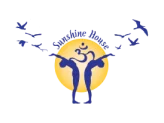
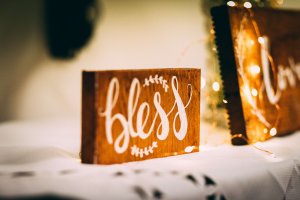 Silence is another beautiful way to celebrate the shortest day of midwinter. Reflect the stillness of the day by cultivating stillness in yourself. Consider honoring the threshold of solstice with an hour of intentional silence for you and your household.
Silence is another beautiful way to celebrate the shortest day of midwinter. Reflect the stillness of the day by cultivating stillness in yourself. Consider honoring the threshold of solstice with an hour of intentional silence for you and your household.

